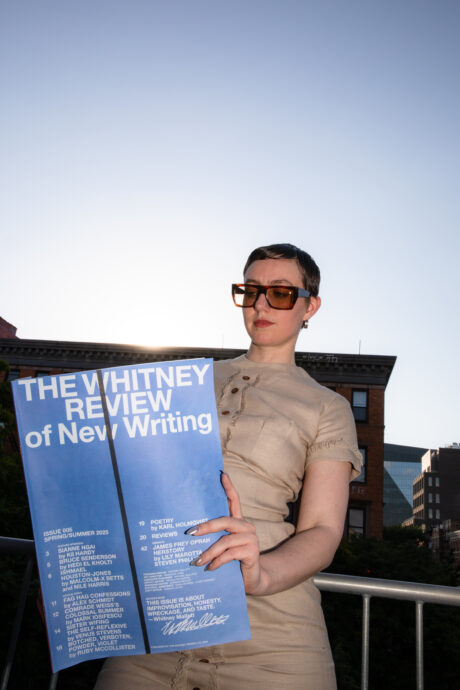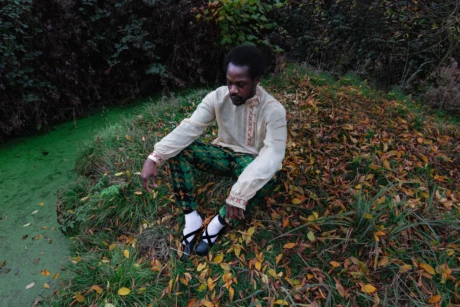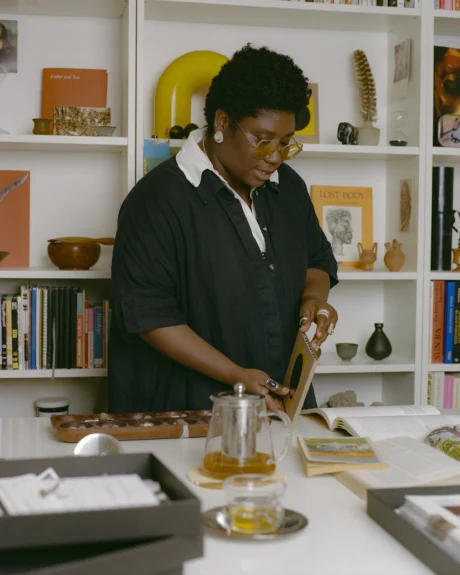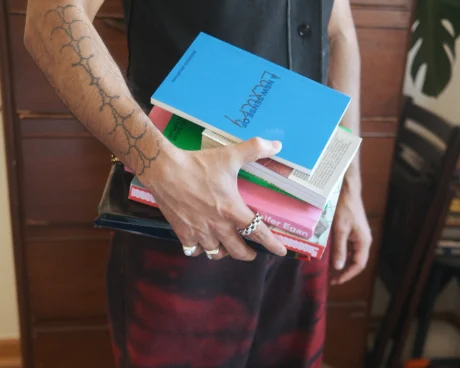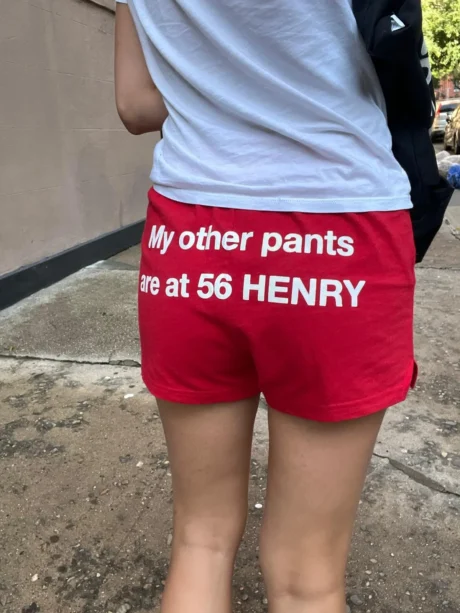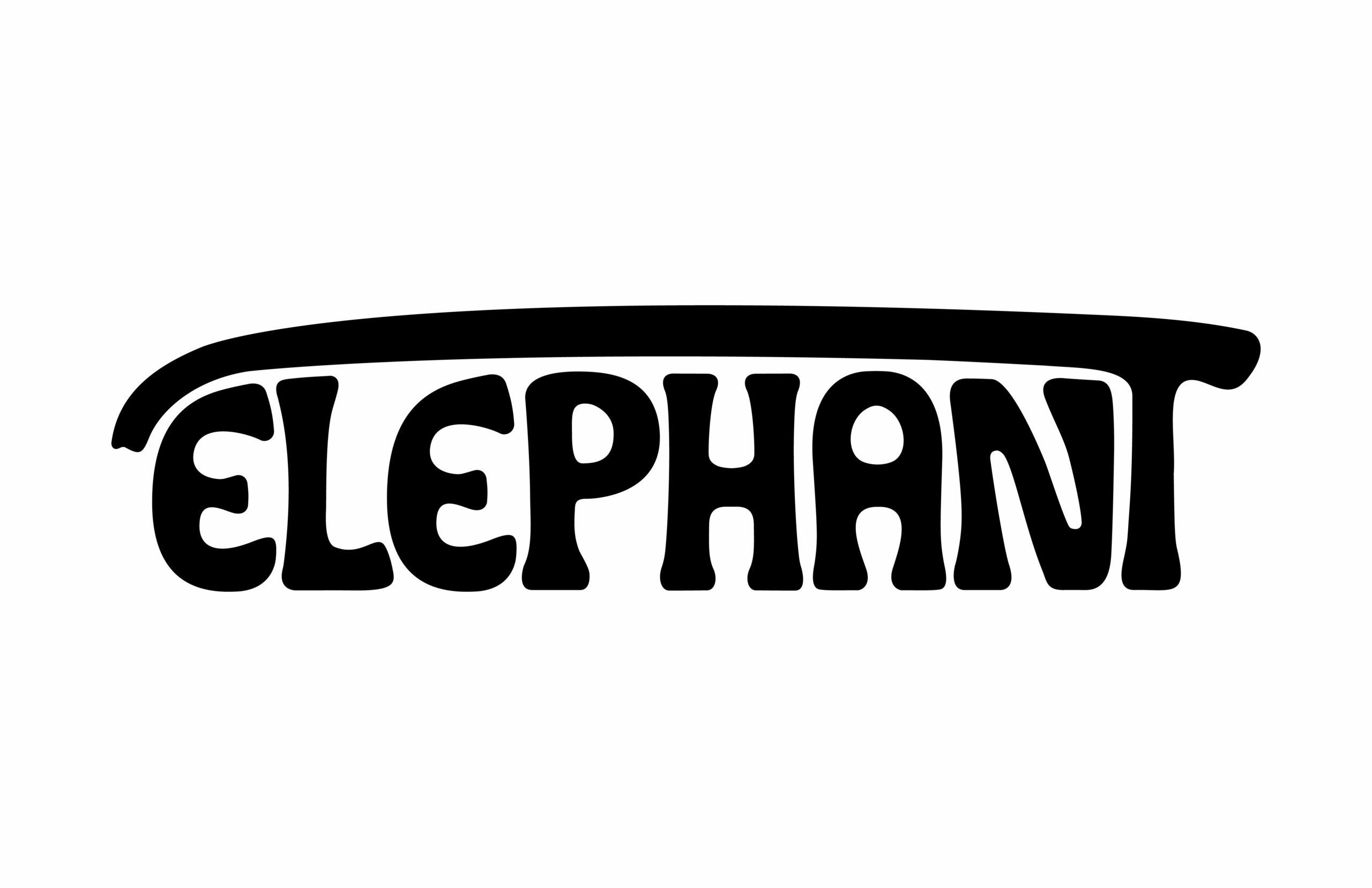Daré Dada speaks with graduate fellows of New Curators to reflect on their experience and understand how the programme nurtures diversity and curatorial responsibility.
Since 2022, New Curators has been fostering the voices of the future generation of aspiring curators. Based at the South London Gallery, the twelve-month curatorial training programme provides its fellows with a space to immerse themselves in seminars and texts relating to contemporary art, curatorial theory and practice, and art history. The educational and research institute also provides opportunities for practical experience in exhibition-making, and facilitates fellows in building artist and institutional relationships.
Daré Dada recently spoke with some of New Curators’ graduate fellows: Felix Choong, Curatorial Assistant at Hayward Gallery; Nikita Sena, Curatorial Researcher at Royal Academy; and Lemeeze Davids, who is working with A4 Arts Foundation in Cape Town, South Africa.
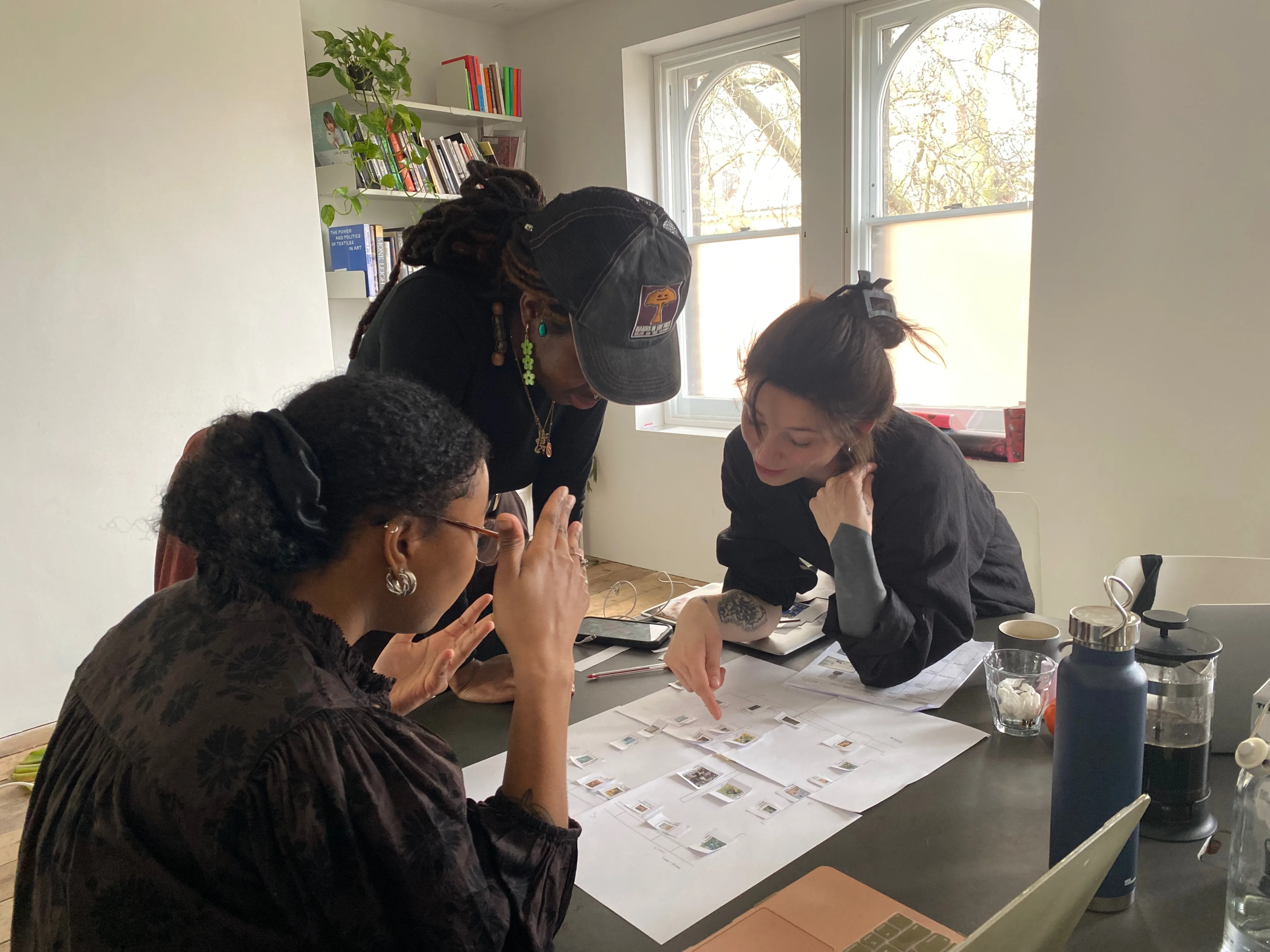
Daré Dada: How did you hear about New Curators?
Lemeeze Davids: I heard about New Curators in Cape Town through a local arts laboratory, A4 Arts Foundation. A4 was running a week-long “test” version of the programme in South Africa. After I participated, I was really inspired by the directors’ visions and decided to apply to be a part of the inaugural cohort in London.
Nikita Lenz: Through the website Run the Check.
Felix Choong: Word of mouth, friends, and people who came to my exhibitions and passed on the word.
DD: What were some of your motivations for choosing this curatorial programme?
LD: I’ve always wanted to be a curator, but found a limited number of opportunities for non-commercial or institutional work experience at my emerging level in South Africa. My motivation was twofold: to learn from industry professionals that I otherwise would never have had access to, and to experience an internationally-minded city where the institutional and non-commercial art world was denser and more funded than where I then lived. As someone who could not have move to London without a living wage and a support network, it’s unique to find a programme like New Curators that pays its fellows, supports them in many ways, encourages real-world work, engages with theory, and facilitates networking opportunities.
NS: Over the last few years, I’d become interested in developing a curatorial practice, but I didn’t know how to make the transition out of the completely different field of human rights policy. I also couldn’t afford to do another Masters, and knew from experience how difficult it is to get an entry-level position, or even an internship, without a degree. I think I also just lacked the confidence and didn’t know where to begin – or even have the language to ask the right questions. I was drawn to the fact that the programme seemed all-encompassing – a chance not just to gain practical skills, but also learn about art and exhibition histories, and develop a broad network. The directors themselves were also a big motivation as all three have worked in some of the most esteemed cultural institutions in the UK and beyond.
FC: A few years back, I began thinking about a curatorial career as I pivoted out of the fashion industry to find a way of working with fashion more slowly and more conceptually. Postgraduate studies weren’t financially an option, and I questioned the effectiveness of such programmes, especially since progression and gaining experience at galleries weren’t guaranteed. The best way to figure out if I wanted to be a curator was to put any money I could spare from my day job into funding exhibitions. Luckily, the personal fulfilment and the public response were really great. I had curated two exhibitions Homesick for Another World (2020) and Knock Knock (2022), which had accompanying catalogues, but I knew I needed some form of institutional experience to take the next steps after the second show. If New Curators hadn’t started the year it did, and I hadn’t got a place on the course, there was a very big part of me that was thinking of stopping as it was just too expensive to sustain. I feel really lucky things played out the way they did.
DD: How did the programme facilitate the space and time to refine your curatorial ideas?
LD: In terms of the theoretical and art history seminars, the programme was well-designed to provide a lineage of exhibition history, which inspired us to think about the research gaps and continuations still needed. The final task of the programme was to create a mock-up of an exhibition proposal, and leading up until this point, we often met with our mentors to discuss and develop our ideas. The feedback given was not only useful in developing ideas, but also challenged us to think about how relevant our proposals were to the current curatorial climate. This proposal included a curatorial essay, as well as more practical items like a proposed budget and venue research. The programme was also punctuated by “reading weeks” where there were no seminars or meetings, and fellows were encouraged to spend time with research questions, complete readings, and work on their curatorial ideas.
NS: Significantly – though we were given a strong foundation of art and curatorial history – we were also exposed to so many different approaches and alternative readings. I think it was bold that the directors were so open about their own limitations and consistently invited other curators, practitioners, and artists to share practices and styles that went beyond their knowledge and experience. At different moments, we were given creative tasks to explore our interests, such as presenting acquisition proposals during Frieze and developing a proposal for our own exhibitions – exercises which allowed us to think through what we were learning, while also allowing us to bring in our own interests.
FC: The programme is split into five strands: academic seminars, skills training, network development, exhibition-making, and mentorship. Unlike traditional programmes that try to retrofit you into traditional ways of thinking and exhibition-making, I think New Curators gave us really solid foundations and the freedom to develop our ideas in whatever form they took. Where the directors might not have been able to offer their expertise on a subject, they were able to bring in or connect us with someone who could. As a cohort, we also shaped the course as we went, deciding what research we wanted to develop and write about, and what speakers we wanted to hear from. It made everything feel expansive as we learnt from each other’s interests. Research seminars also facilitated our interests that drew out interesting dialogues between our respective interests – one example I think of is where we presented on seminal exhibitions, I presented on Alexander McQueen: Savage Beauty, while someone else in the cohort presented on Mining the Museum. Can you imagine that happening at the Courtauld? How great that these moments can be in dialogue with one another, and we can see what can be uncovered!
DD: How has New Curators impacted your understanding of curatorial practice?
LD: New Curators has broadened my art and exhibition history knowledge greatly, which in turn has transformed the way I think about curatorial trends and experiments that are happening today, and what they’re referencing. The seminars where we met renowned, working curators and arts practitioners helped us see into their world. By understanding how they go about curating, we could decide for ourselves which of their practices, beliefs, or theories we resonated with and perhaps were challenged by. Working on Firelei Báez’s exhibition also expanded our views about what fell under our umbrella of responsibilities as curators – preconceived ideas of what it meant to practically organise an exhibition gave way for a lot of productive questions.
NS: My understanding of curatorial practice continued to shift with every curator and artist I met – and still does, which for me is really exciting! At the core of these different practices is a deep curiosity and enthusiasm, and a commitment to inhabiting the world of different artists and learning from and with them. The importance and value of relationships has also been underscored – relationships with audiences and communities, between different ideas, themes, and spaces. There were curators I met who really moved me, such as Anthony Huberman, Florence Ostende, Tarini Malik, and Hamza Walker (and more besides!). Despite their very different practices, I think it’s their shared eagerness to learn and discover with artists and audiences alike that I deeply admire.
FC: The programme has completely blown open my understanding of curatorial practice. It is a lot of work! The time that we had with everyone, from curators and artists to registrars and conservators, was really invaluable in developing an understanding of the reality of bringing together an exhibition – just how much of a collective effort it is, how crucial everyone’s expertise is. It’s not just things brought into a room, but years of research, work, and negotiation to present something seamless. Specifically, hearing from Nancy Spector, Alexandra Monroe and Florence Ostende – three curators I greatly admire – was instrumental in understanding how exhibition design and architecture are the curator’s tools for putting on truly exceptional and extremely ambitious exhibitions.
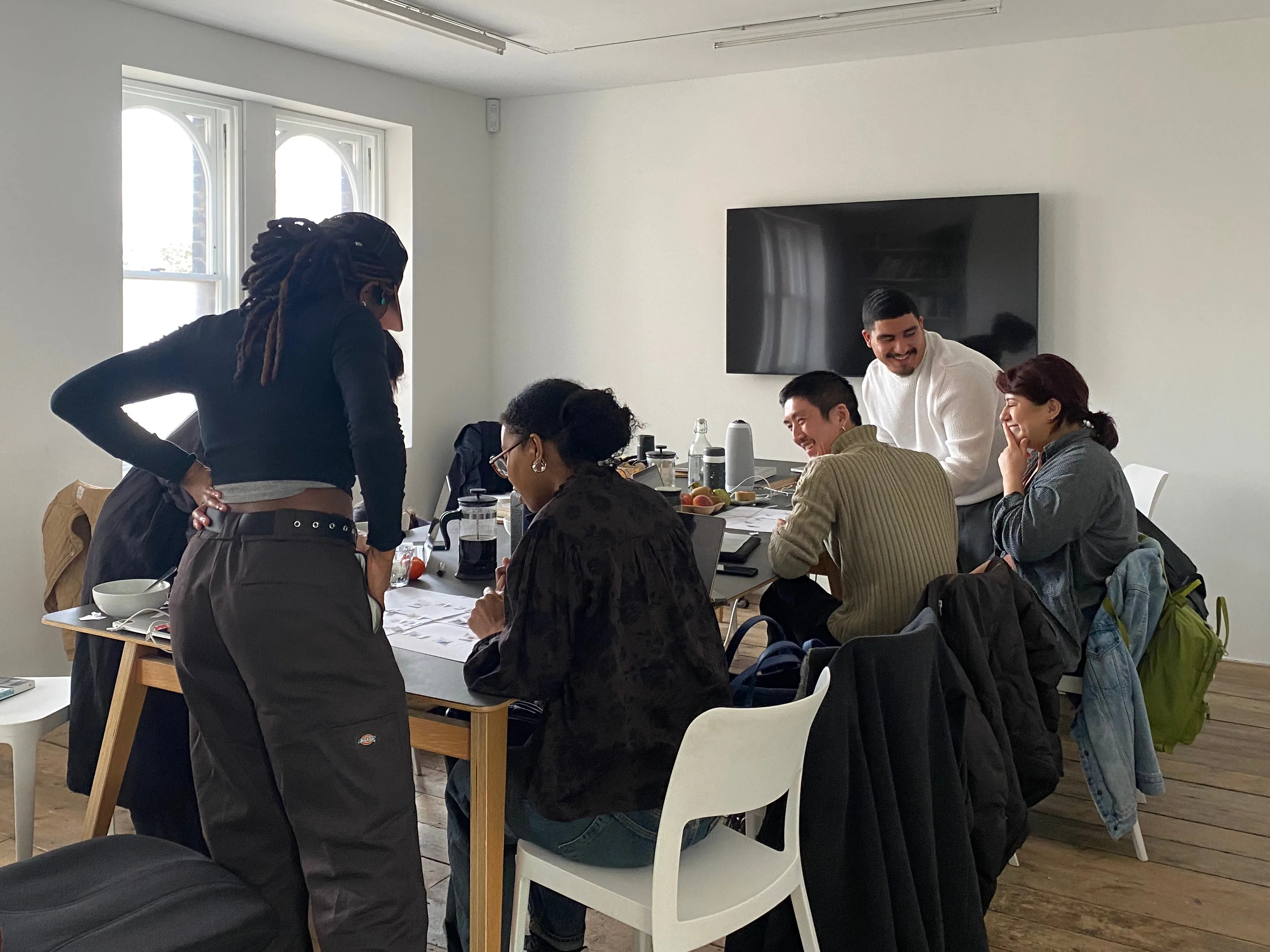
DD: How has the programme given you the knowledge and confidence to thrive in the art world?
LD: The practical component of the New Curators programme – staging an exhibition at the South London Gallery with Firelei Báez – gave me a confidence that I’ve carried forward. The directors of both New Curators and the South London Gallery, as well as the artist, placed an immense amount of trust in our decisions. The programme also facilitated many introductions to industry professionals and encouraged us to network.
NS: We were lucky to meet so many incredible people, but the network that we developed between ourselves as a cohort and with the directors has been really wonderful. I arrived at the programme frighteningly insecure and unsure of myself. I now have a group of people who have grown with me and who I continue to explore and engage with. My confidence has been greatly boosted by the wealth of knowledge I accumulated over the years. It’s been like learning a new language – from art historical references and movements to observations about form and medium.
FC: Just having a place on the programme and being taken seriously from the get-go; presenting research and decision-making on Firelei Báez’s exhibition alongside the artist’s team at Hauser & Wirth and the teams at the South London Gallery quickly dissipated any imposter syndrome I had. Prior to New Curators, I wasn’t able to secure an interview, let alone a job, but the programme gave me the skills and confidence I needed – two months after the course finished, I managed to secure a position in the curatorial team at the Hayward Gallery.
DD: In what ways does this curatorial programme support the diversification of the curatorial profession?
LD: We encountered many practitioners through the programme that had different ideas of what being a curator entails. From biennales to music festivals to international arts institutions to repatriation movements to digital innovation, New Curators scheduled seminars by an array of professionals to present on their practices and engage with our questions. In addition to professional diversity, New Curators also tried to invite people from different parts of the world, such as India, the U.S., South Africa, Nigeria, Germany, and Mexico amongst other places. The cohort itself was diverse and allowed us to share our perspectives in a global city like London.
NS: It’s rare to have a paid programme of this nature, and this makes such a big difference for people like me, who would have struggled financially to study again. Class sometimes feels like a taboo subject – one that is difficult to understand and discuss. In the art world, and in terms of the social aspect especially, wealth and privilege are coveted and visible. On the other hand, labour and class inequality are more easily obscured. The international scope of the programme is also important. Fellows came from or lived in cities such as New York, Cape Town, Johannesburg, Chicago, Hong Kong, Cuba, and more. Our different backgrounds and experiences helped us experience and embody the notion of multiple art histories.
FC: My curatorial interests lie primarily in the conceptual intersections of fashion and contemporary art. Commonly, fashion exhibitions are kept to institutions like the V&A and the MET, and are treated in very specific ways wherein garments are presented as historical objects – a representation of a point in time and culture. I’m interested in recontextualising them, and there are a few really great curators out there that I look to, like Jeppe Ugelvig and Matthew Linde, who are helping to steer that conversation. I found these interests were greatly encouraged in the programme which culminated in an exhibition proposal, but I can’t say too much about that as I hope to bring it to life one day!
In terms of the actual profession and the exhibitions being put on, I see a slow shift, in some ways more genuine than others. I hope we don’t get swallowed up in the machine. I’m really excited to see where all the fellows end up and how we might end up infiltrating all these big institutions and galleries.
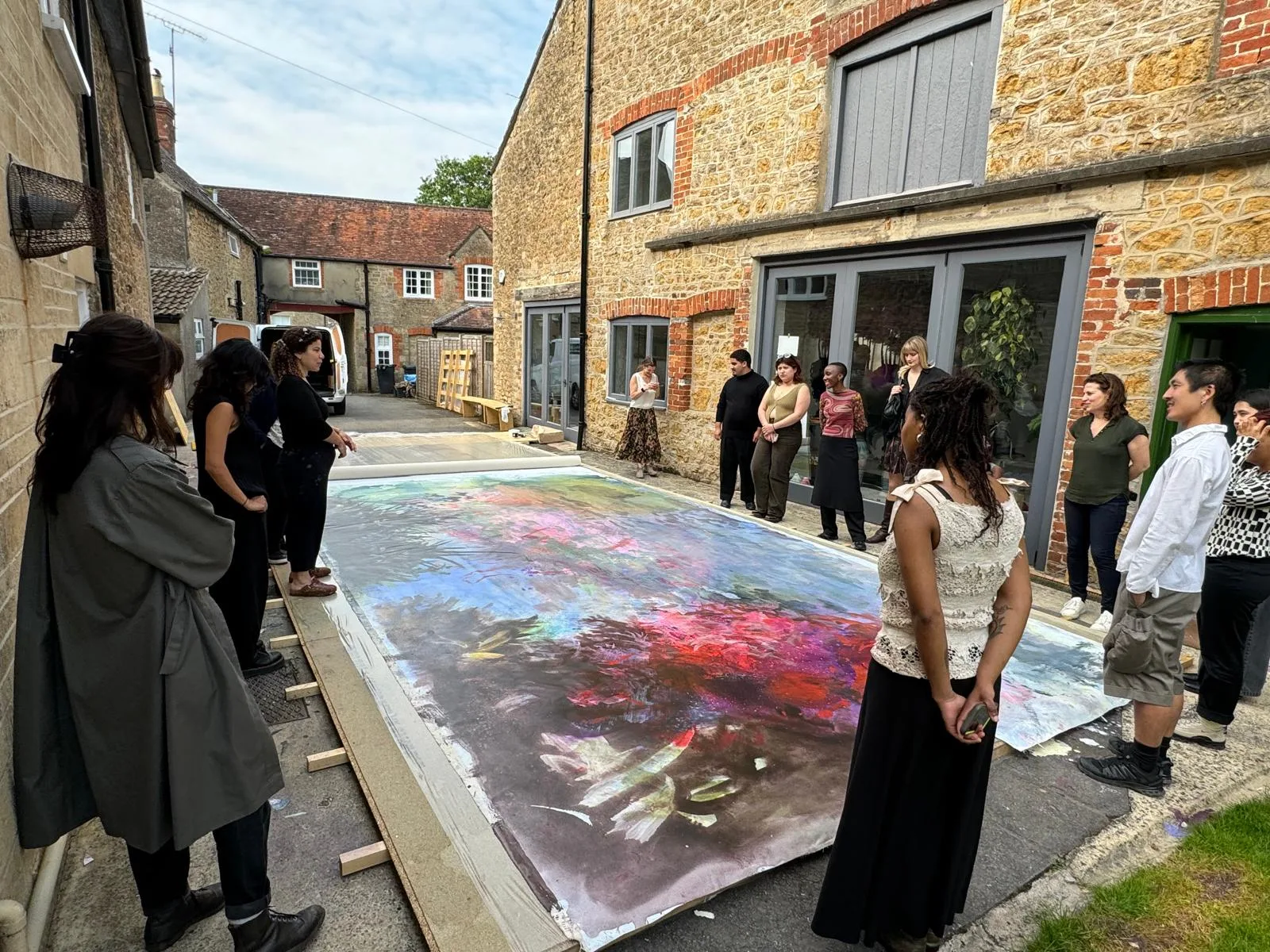
DD: Why now? What makes New Curators important for aspiring curators and the art economy?
LD: Curatorial studies is still a relatively new field of study, and it’s gaining traction today. I have my honours in curatorial studies and am about to complete my Master’s in contemporary curatorial practice, though the real-world experience in curatorship is limited in tertiary education. There may be practical projects one can put together for academic evaluation, but there is little to no interaction with the everyday challenges that curators are met with when working in the real world. New Curators provides a theoretical competent with essay-style tasks, but it also gives its fellows the experience to leave the programme saying, “I know how to do that in the context of a real exhibition.” This produces a curatorial workforce that operates from confident knowledge upon their graduation, which is valuable to the arts economy.
NS: The art world seems to be in a moment of flux and riddled with a series of existential questions. In creating the space for new voices, and people who otherwise wouldn’t have the opportunity to enter the field, New Curators offers the possibility for new perspectives, ideas and responses to emerge. Another brilliant aspect of the programme is that it doesn’t shy away from asking tough questions and engaging in controversial and provocative issues and debates that I think would be avoided elsewhere.
FC: In London, we’re spoiled with the amount of art on offer, which is constantly being refreshed every few months – it makes it hard to believe that the art economy could be struggling. This is especially evident in the public sector, yet every organisation is facing a number of novel challenges stemming from the pandemic, spiralling costs, climate change, war, A.I., and so on. What makes something about New Curators so special is that it brought in such a variety of people from different social and professional backgrounds. I think it is crucial for the industry to pivot and adapt. We’re living in unprecedented times and we shouldn’t be thinking traditionally to navigate them – we need new voices and ideas brought in to help steer the change.
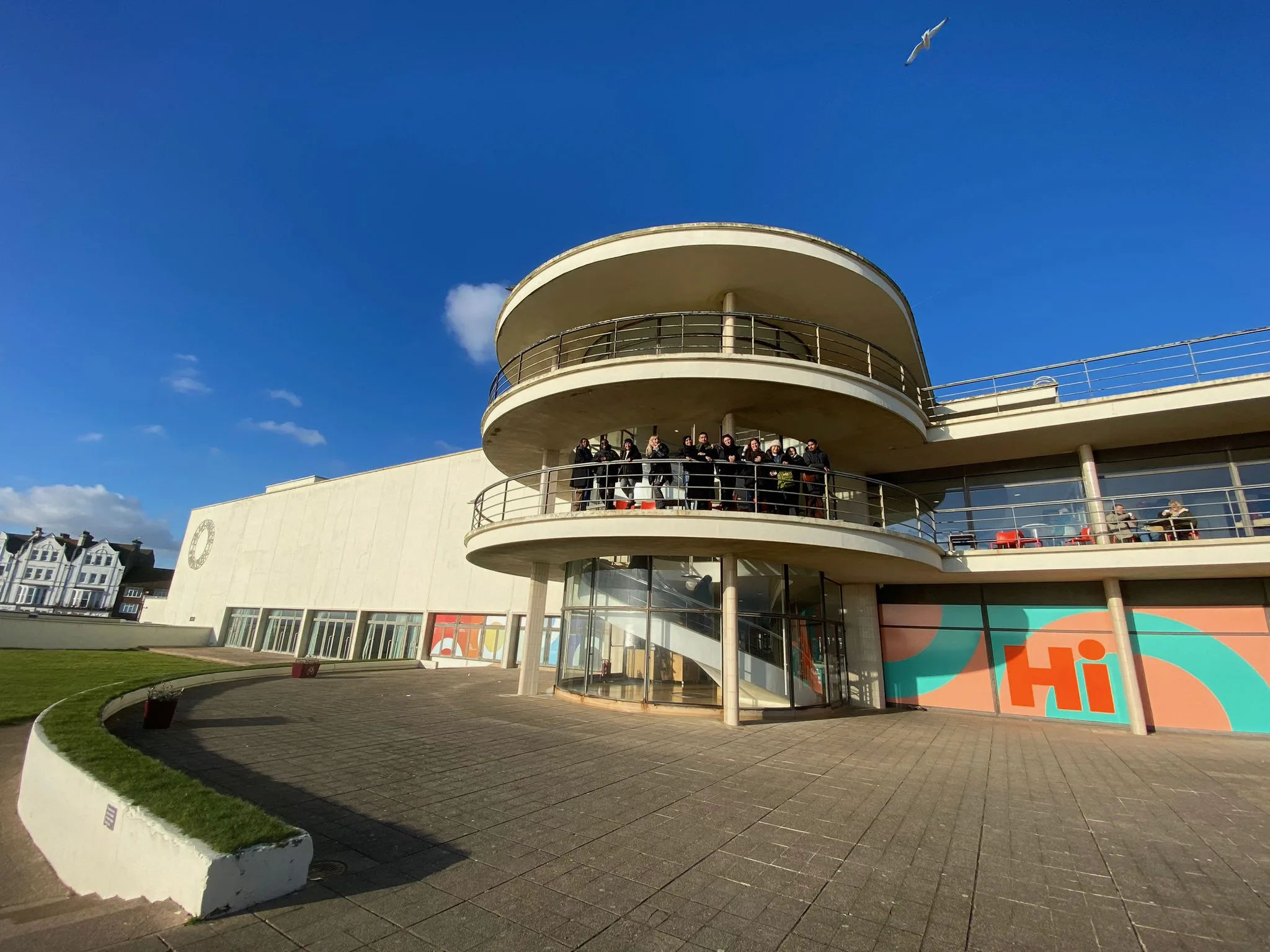
DD: Why is it important that institutions diversify the curatorial profession?
LD: Diversification is important because life is diverse and comprises many different points of view, many different histories. In the business of constructing narratives, curators should be trained in lateral and sensitive thinking. Often, the way our world is broadened is by meeting people who come from different backgrounds, geographies, languages, social networks, and work environments. In my mind, a curator is an endless scholar – but one cannot create connections without care. There has to be a responsibility for the ideas and people we might platform; care comes from communion.
NS: Art and culture thrive from diversity – the multiplicity of ideas, perspectives, experiences, and people. It’s how we combat stagnation and mundaneness. Diverse curators, as well as artists and anyone else who works in the cultural field, bring new ways of seeing, being, and creating. We should want more of that. The great thing about New Curators is that it provides practical points of access.
FC: In any field, it starts to feel like a monoculture if you’re surrounded by peers with the same views and backgrounds; it’s an echo chamber that quickly becomes quite stagnant. In every scenario, it’s more fruitful to be surrounded by different points of view – whether that’s to confirm what you believe, or to challenge you and change your way of thinking. If an aspect of art is about reflecting life back to us, it’s crucial that the workforces behind these organisations and institutions should reflect that too, otherwise how can we truly hope to serve the public as many institutions set out to do?
Something that I’ve also been thinking about since the programme – having not come through a traditional pathway to the role of the curator – is that I do not see the curator as someone facing the audience telling you what they know, trying to exert some kind of dogma or authority of why this is important. Rather, I see the role as someone facing the same way as the audience towards the artworks learning with them, wanting to share an intense enthusiasm and appreciation for something.
Words by Daré Dada
